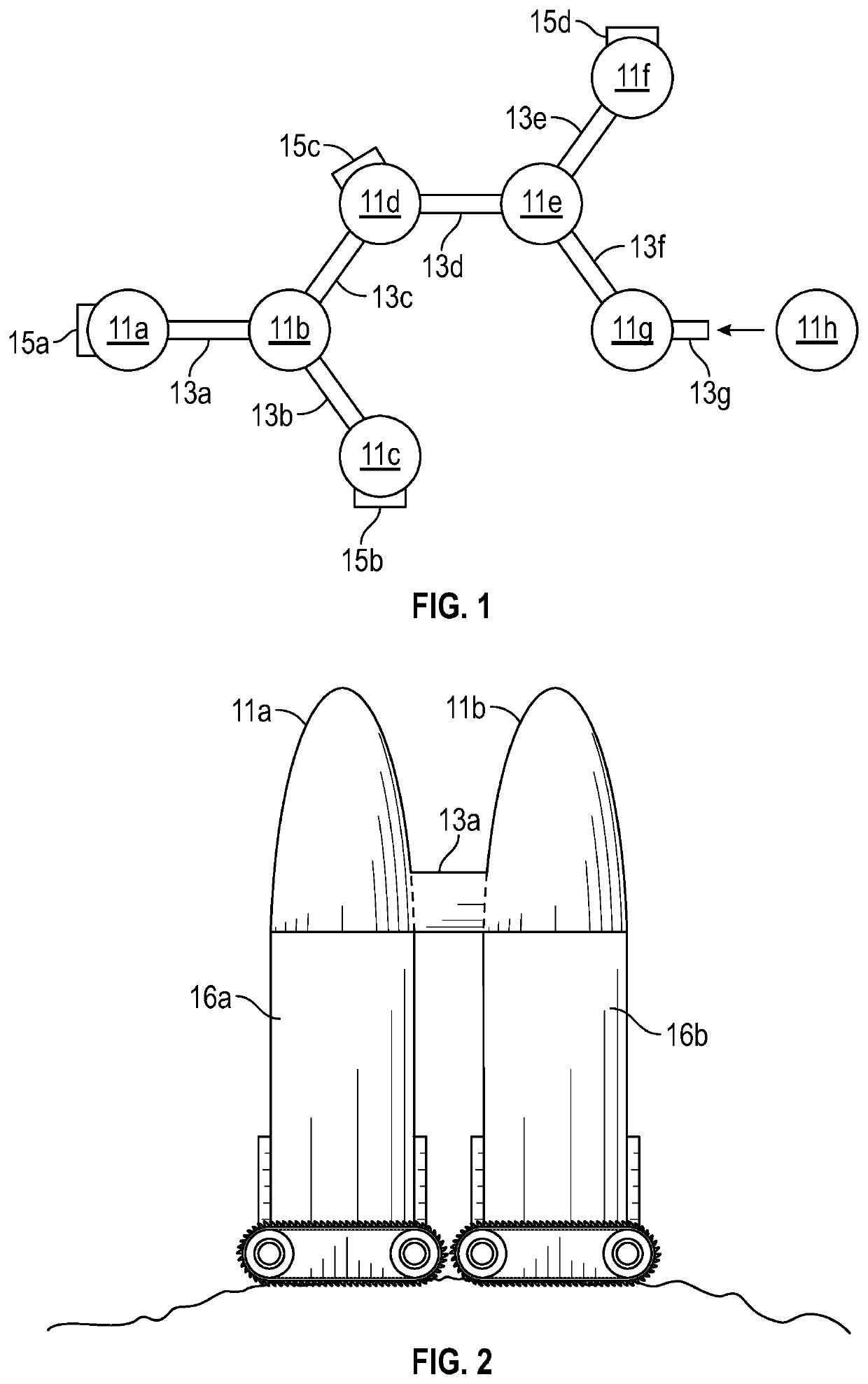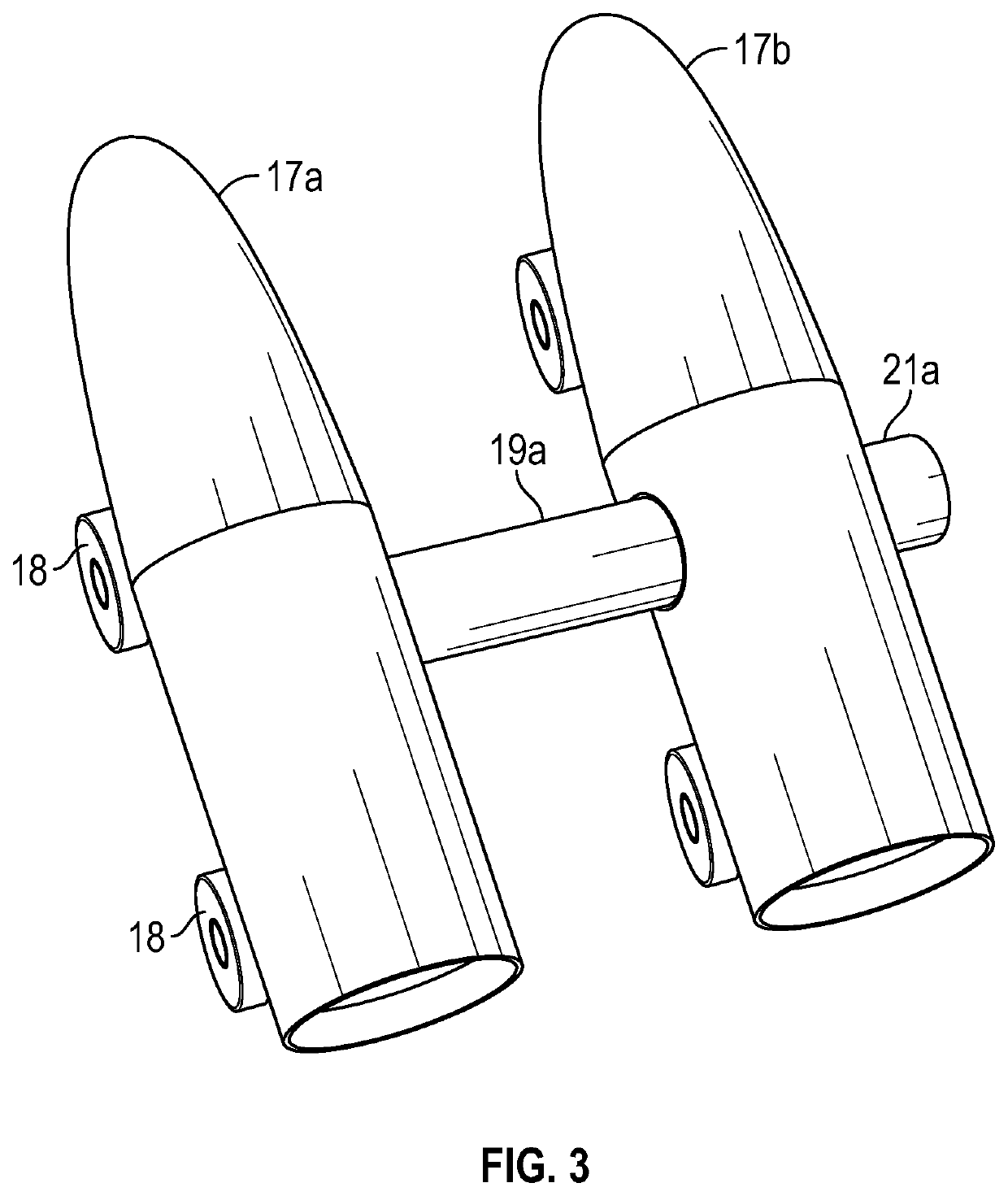Spacecraft-module habitats and bases
a technology of spacecraft and habitats, applied in the field of spacecraft modules, can solve the problems of power and/or communication, inability to meet the needs of real-time conversation, and energy expense of generating muons artificially in particle accelerators, so as to reduce the weight and volume of fuel, and increase the habitat/work space accommodations and facilities. , the effect of reducing the weight and volum
- Summary
- Abstract
- Description
- Claims
- Application Information
AI Technical Summary
Benefits of technology
Problems solved by technology
Method used
Image
Examples
Embodiment Construction
[0024]With reference to FIG. 1, a set of surface base modules (here seven in number) 11a-11g are interconnected with one another via respective docking systems 13a-13f. A new module 11h is in process of being transported into position to connect to existing module 11g by means of docking system 13g. One or more exterior airlock systems 15a-15d are provided from some of the modules to allow access to the lunar or planetary (e.g. Martian) surface. As seen in FIG. 2, two of the modules (e.g. modules 11a and 11b) are connected by docking system 13a. Modules 11a and 11b are both derived from the original spacecraft that have landed on the surface, and now double as usable modules of the surface base. At least part of the former micro-fusion fuel spaces 16a and 16b might now be used as storage facilities in the modules. It should be noted that one of the modules (perhaps one that is not docked with the other modules) might be retained as an ascent vehicle for reaching an Earth-return vehi...
PUM
 Login to View More
Login to View More Abstract
Description
Claims
Application Information
 Login to View More
Login to View More - R&D
- Intellectual Property
- Life Sciences
- Materials
- Tech Scout
- Unparalleled Data Quality
- Higher Quality Content
- 60% Fewer Hallucinations
Browse by: Latest US Patents, China's latest patents, Technical Efficacy Thesaurus, Application Domain, Technology Topic, Popular Technical Reports.
© 2025 PatSnap. All rights reserved.Legal|Privacy policy|Modern Slavery Act Transparency Statement|Sitemap|About US| Contact US: help@patsnap.com



